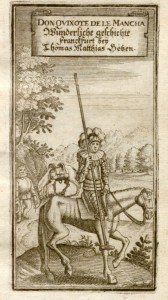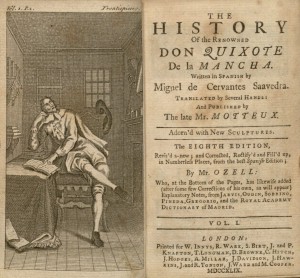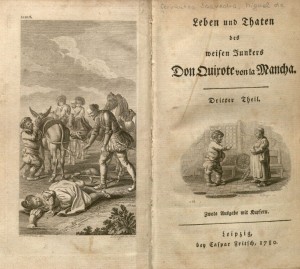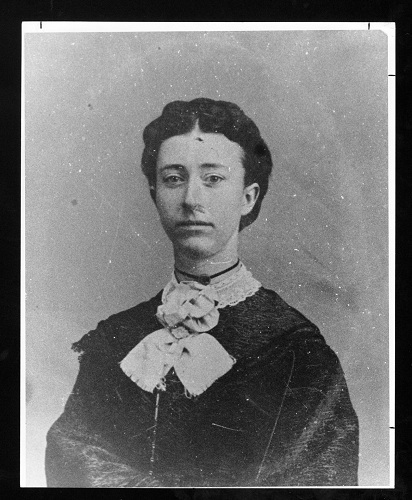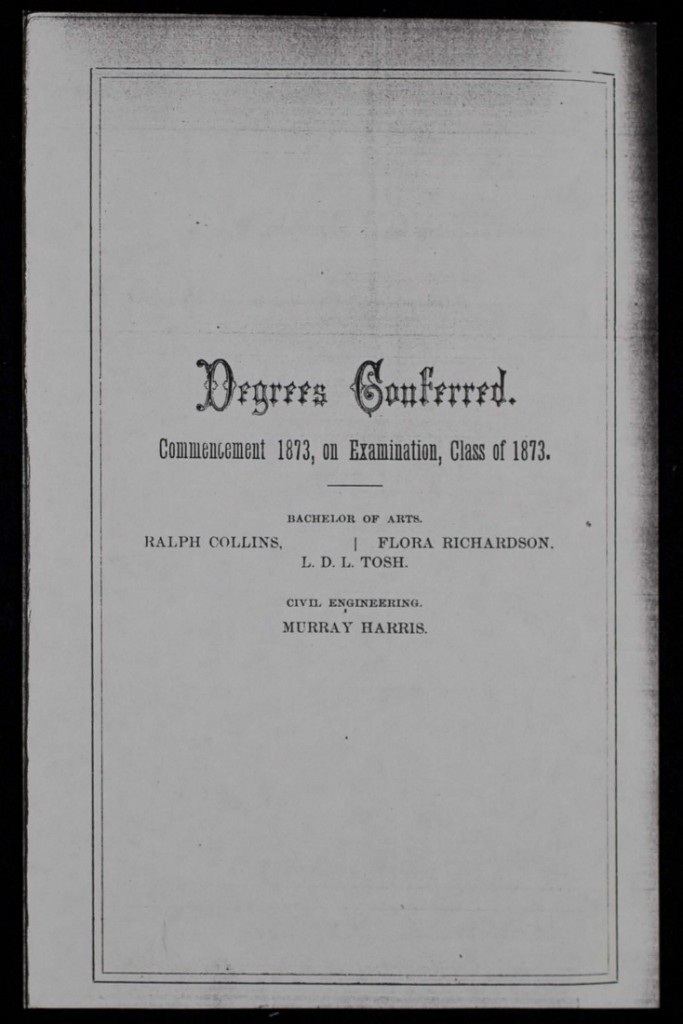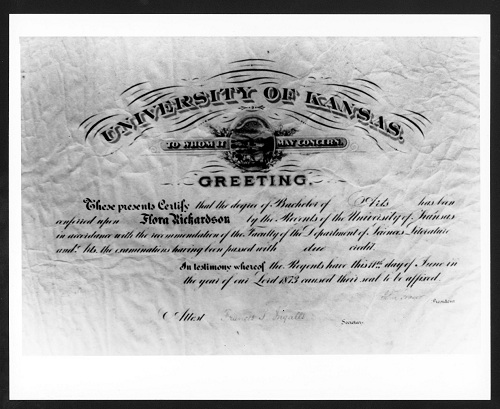Quixotic in Any Language: Don Quixote at Spencer
September 28th, 2015Over four-hundred years ago, Miguel de Cervantes Saavedra conceived of one of the most enduring characters of western literature: a gentleman who, upon reading too many chivalric romances, determined to go into the world as Don Quixote and practice the art of chivalry.
The first volume of El Ingenioso Hidalgo Don Quixote de la Mancha was published in 1605, to immediate success. The book was quickly translated into many languages; Spencer Library houses many translations of this seminal work.
After the success of Don Quixote, Cervantes turned his attention to writing other works, particularly Novelas ejemplares and Viaje al Parnaso. However, in 1614, a spurious sequel to El Ingenioso Hidalgo Don Quixote de la Mancha appeared in print, by a rival writing under the assumed name of Alonso Fernández de Avellaneda. In response, Cervantes penned the authorized Don Quixote sequel, Segunda Parte del Ingenioso Cavallero Don Quixote de la Mancha, which appeared in print in late 1615. In honor of the four-hundredth anniversary of the publication of the second and final volume featuring Don Quixote and Sancho Panza, please enjoy some images of the gentleman knight as depicted through the ages and in different translations.
The knight errant: Frontispiece of Don Kichote de la Mantscha (Frankfurt, 1669). Special Collections, Call Number Cervantes X6. Click image to enlarge.
The dreaming hidalgo: Frontispiece and title page of The history of the renowned Don Quixote de la Mancha (London, 1749). Special Collections, Call Number Cervantes X3 v. 1. Click image to enlarge.
Acting chivalrously: Frontispiece and title page of Leben und Thaten des weisen Junkers Don Quixote von la Mancha (Leipzig, 1780). Special Collections, Call Number Cervantes Y110 v. 3. Click image to enlarge.
Fighting windmills: Frontispiece and title page of Den Tappre och Snillrike Riddaren Don Quixotes af Mancha Lefverne och Bedrifter (Stockholm, 1818). Special Collections, Call Number Cervantes Y49 v. 1-2. Click image to enlarge.
Reading chivalric romances: Frontispiece and title page of Histoire de Don Quichotte de la Manche (Paris, 1853). Special Collections, Call Number Cervantes Y45. Click image to enlarge.
Whitney Baker
Head, Conservation Services

